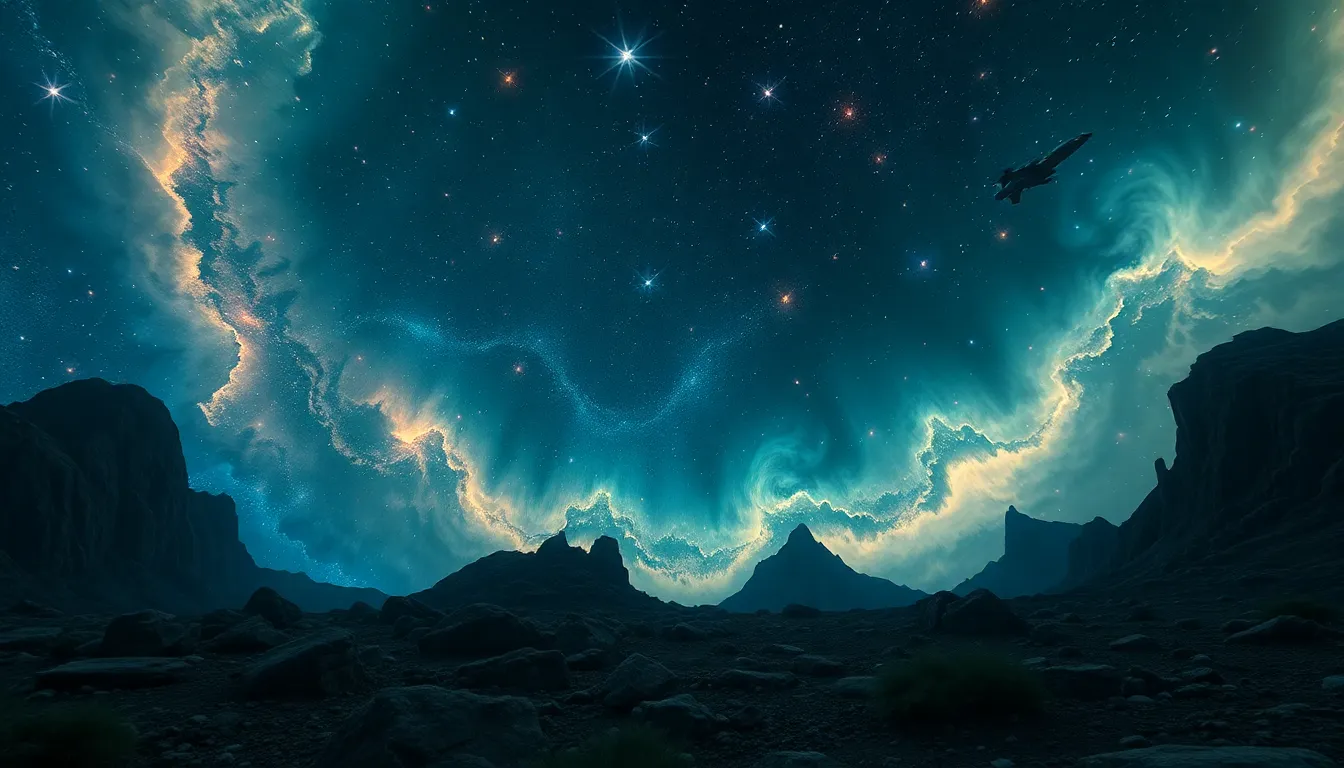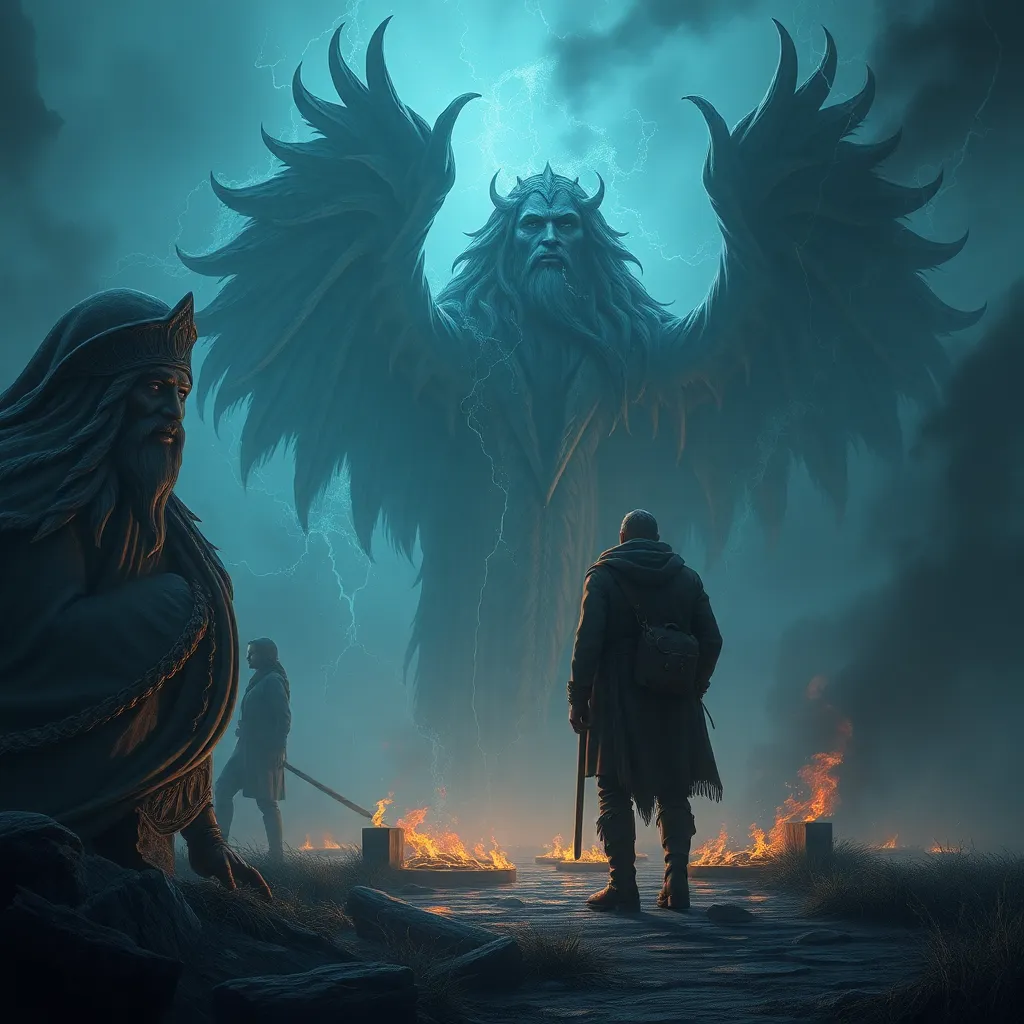Baltic Mythology: An Introduction
Baltic mythology, a vibrant tapestry of ancient beliefs and stories, offers a captivating glimpse into the spiritual world of the Baltic peoples. These myths, passed down through generations, reveal a complex understanding of the cosmos, nature, and the human condition. Unlike the more famous Greek and Roman mythologies, Baltic mythology has a unique flavor, with its own distinct set of gods, goddesses, and supernatural beings. This mythology is particularly rich in its portrayal of the underworld and otherworld realms, places imbued with both power and mystery.
The Underworld in Baltic Mythology: A Realm of Shadows and Trials
In Baltic mythology, the underworld, known as "Põrgu" or "Velnio Karalystė," is a shadowy realm ruled by the god of death, Velnias. This subterranean domain is often depicted as a place of darkness, cold, and solitude. It is a realm of trials and challenges, where souls are judged and tested after death. To reach the underworld, the spirits of the dead must traverse a treacherous path, often guided by a spirit ferryman.
Those who lead virtuous lives find rest and peace in the underworld, while those who have committed evil deeds face punishment and eternal torment. In some traditions, the underworld is also a place of enchantment, where powerful magic and ancient knowledge reside. However, it is generally viewed as a realm of isolation and separation from the world of the living.
The Otherworld: A Place of Magic and Transformation
Beyond the realm of the dead lies the Otherworld, a mystical dimension known as "Anapilis" or "Ašvieniai." This magical realm, often associated with the heavens, is a place of beauty, abundance, and supernatural power. It is a realm where spirits of nature, gods, and goddesses reside. The Otherworld is often seen as a realm of transformation, where the boundaries between the real and the supernatural blur, and where dreams and visions can become reality.
Legends tell of heroes and mortals who journey to the Otherworld to gain wisdom, seek divine guidance, or obtain magical objects. These journeys often involve overcoming obstacles, facing trials, and interacting with supernatural beings. The Otherworld is a place of both danger and opportunity, a realm where the ordinary can become extraordinary.
The Role of Death and the Afterlife in Baltic Belief Systems
Death, in Baltic mythology, is not seen as an end, but rather as a transition into another realm of existence. The spirits of the dead are believed to linger in the world of the living, sometimes interacting with the living through dreams, omens, or visions. It was seen as important to honor the dead, through rituals and offerings, to ensure their peaceful journey to the afterlife.
The concept of the afterlife was a prominent part of Baltic spiritual beliefs, shaping their understanding of life, morality, and the natural world. The belief in the underworld and the Otherworld provided a framework for interpreting death, mourning, and the search for meaning in life.
Key Deities and Beings of the Underworld and Otherworld
Baltic mythology is populated with a pantheon of gods and goddesses, each with their own distinct roles and powers. Velnias, the god of death and the underworld, is a figure of both fear and fascination. His consort, the goddess Laima, is the weaver of fate, who determines the course of life, death, and destiny.
Other significant beings of the underworld and Otherworld include the spirit ferryman, the forest spirits, and the mythical creatures that inhabit these realms. These beings, both benevolent and malevolent, played important roles in the folklore and beliefs of the Baltic people. They were believed to influence the natural world, the fates of humans, and the balance of the cosmos.
The Rituals and Practices Associated with the Underworld and Otherworld
The Baltic people developed a rich array of rituals and practices associated with the underworld and the Otherworld. These traditions aimed to maintain harmony with the spirits, ensure a safe passage for the dead, and seek guidance from the supernatural forces.
One of the most important rituals was the funeral. Burial ceremonies were often elaborate, involving offerings of food, drink, and personal possessions to the deceased. It was believed these offerings would sustain the spirits on their journey to the underworld and ensure their well-being. The dead were often buried facing east, signifying the rising sun and the cycle of life and death.
Another significant practice involved the veneration of ancestors. Baltic people held a deep respect for their ancestors and believed their spirits resided in the underworld or the Otherworld. They would often visit ancestral burial mounds, offer sacrifices, and seek their guidance and protection. Ancestral spirits were believed to play a crucial role in the well-being of the living, influencing the harvest, the health of the family, and the prosperity of the community.
Furthermore, divination played a significant role in Baltic cultural practices, providing insights into the future, interpreting dreams, and communicating with the spirit world. Various methods were employed, including reading bird omens, interpreting the patterns of smoke from a fire, and interpreting the runes. Runes, symbolic characters etched on wood or stone, were believed to possess magical power and were used for divination, communication with spirits, and protection.
Folklore and Legends: Stories of the Underworld and Otherworld
The belief in the underworld and Otherworld permeated Baltic folklore and legends. These tales, passed down through generations, offered a glimpse into the spiritual landscape of the Baltic people, their understanding of the supernatural, and their relationship with the forces that shaped their world.
Legends often portrayed journeys to the Otherworld, where heroes and mortals sought knowledge, magic, or to interact with supernatural beings. The stories of these journeys typically involved treacherous paths, magical creatures, and trials that tested the courage and wisdom of the protagonists. One famous legend tells of the hero Vytis, who journeyed to the Otherworld to slay a monstrous serpent, a symbol of chaos and darkness. These journeys were often seen as metaphors for the challenges and transformations encountered in life.
Folklore also featured stories about mythical creatures that inhabited the underworld and the Otherworld. The "Laumė," a benevolent spirit, was believed to be a guardian of children, bringing luck and prosperity. The "Jūratė," a goddess of the sea, resided in a magical palace built of amber and was known for her beauty and wisdom. These creatures, with their unique powers and attributes, shaped the folklore and beliefs of the Baltic people.
These stories not only entertained but also served as a means of teaching moral lessons, conveying wisdom, and reinforcing cultural values. They helped to shape the understanding of the world, the power of nature, the importance of respect for the ancestors, and the interconnectedness of the living and the dead.
The Influence of Baltic Mythology on Literature and Art
The rich tapestry of Baltic mythology has left an enduring influence on the literature and art of the region. The themes and imagery from these myths have served as inspiration for centuries, finding expression in folk songs, epics, poetry, visual arts, and music.
The epic poem "The Song of the Nibelungs," a cornerstone of Germanic literature, draws heavily on themes of death, the underworld, and the Otherworld, similar to those found in Baltic mythology. The poem narrates the tragic tale of Siegfried, a legendary hero, whose journey to the underworld and his eventual death resonate with the archetypal themes of death, rebirth, and the cyclical nature of existence.
Baltic mythology has also found expression in the visual arts. The symbolism of the tree of life, which connects the heavens, the earth, and the underworld, is a common motif in Baltic art. This imagery, often depicted in wood carvings, textiles, and ceramics, symbolizes the interconnectedness of all things and the cyclical nature of life and death.
The influence of Baltic mythology is evident even in modern Baltic art. Contemporary artists often draw upon traditional themes and imagery from these myths to explore contemporary issues of identity, nature, and the human condition. The enduring power of these myths lies in their ability to connect with timeless human emotions and experiences, offering insights into the human journey and the mysteries of the universe.
Theories and Interpretations of Baltic Mythological Realms
The interpretation of Baltic mythological realms has been a subject of debate and exploration among scholars and researchers. Some theories propose that the underworld and the Otherworld represent different stages of the afterlife, with the underworld being a place of judgement and the Otherworld a realm of eternal bliss or punishment.
Other theories suggest that these realms reflect the cyclical nature of life and death, with the underworld symbolizing the darkness of winter and the Otherworld the light of spring. The journey to the Otherworld could be interpreted as a metaphor for the process of death and rebirth, a symbol of transformation and renewal.
Some scholars have also drawn parallels between Baltic mythology and other Indo-European mythologies, suggesting common roots and shared themes. For example, the concept of the Otherworld is found in various mythologies, including Celtic, Germanic, and Slavic cultures, suggesting a shared understanding of the supernatural and the afterlife.
The study of Baltic mythology continues to offer intriguing insights into the beliefs and rituals of the Baltic people, their relationship with the natural world, and the enduring power of ancient traditions.
The Significance of Baltic Underworld and Otherworld Concepts in Modern Society
Baltic underworld and Otherworld concepts continue to hold relevance and significance in modern society, offering insights into the enduring human fascination with the mysteries of life, death, and the afterlife. These concepts provide a framework for exploring themes of identity, spirituality, and the human experience, offering a rich tapestry of symbolism and imagery that resonates with contemporary concerns.
The belief in the power of the underworld and the Otherworld can be seen as a reflection of the human desire to make sense of the unknown, to find meaning in death and loss, and to connect with forces greater than ourselves. These concepts offer a way to grapple with the challenges of life and to find solace in the face of adversity.
Furthermore, the stories, rituals, and beliefs associated with the underworld and the Otherworld provide a window into the past, allowing us to connect with the cultural heritage and traditions of the Baltic people. These concepts remind us of the enduring power of mythology to influence our understanding of the world, shape our values, and inspire our imagination.
FAQ
What is the relationship between the underworld and the Otherworld in Baltic mythology?
The underworld and the Otherworld are distinct realms in Baltic mythology. The underworld is a place of the dead, ruled by Velnias, where souls are judged and tested. The Otherworld is a magical realm, associated with the heavens, where spirits of nature, gods, and goddesses reside.
What is the role of death in Baltic mythology?
In Baltic mythology, death is not seen as an end, but rather as a transition into another realm of existence. The spirits of the dead are believed to linger in the world of the living, sometimes interacting with the living through dreams, omens, or visions.
Are there any modern practices that reflect Baltic beliefs in the underworld and Otherworld?
While Baltic mythology is not actively practiced in modern times, elements of its beliefs can be found in contemporary folklore, storytelling, and art. The themes of death, rebirth, and the interconnectedness of the living and the dead continue to resonate with audiences.
How has Baltic mythology influenced the development of modern literature and art?
Baltic mythology has served as a source of inspiration for artists throughout history. Themes and imagery from these myths have found expression in literature, poetry, music, visual arts, and folk traditions.
What is the significance of Baltic underworld and Otherworld concepts in modern society?
These concepts continue to offer insights into the enduring human fascination with the mysteries of life, death, and the afterlife. They provide a framework for exploring themes of identity, spirituality, and the human experience, offering a rich tapestry of symbolism and imagery that resonates with contemporary concerns.



